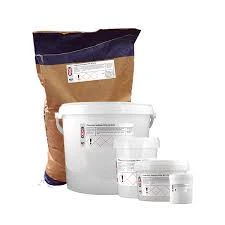
Overview of Direct and Indirect Food Additives in Modern Nutrition
Understanding Direct and Indirect Food Additives
Food additives play a significant role in the modern food industry, enhancing the quality, safety, and shelf life of various products. They can be classified into two main categories direct and indirect food additives. Understanding the difference between these two types is essential for consumers who wish to make informed choices about their food.
Direct Food Additives
Direct food additives are substances that are intentionally added to food products during the manufacturing process to achieve specific effects. These additives serve various purposes, including preserving freshness, improving taste, enhancing appearance, and providing nutritional benefits. Common examples of direct additives include preservatives such as sodium benzoate, flavor enhancers like monosodium glutamate (MSG), and colorants such as artificial dyes.
The use of direct food additives is tightly regulated by government agencies, such as the U.S. Food and Drug Administration (FDA), to ensure their safety for consumption. These substances undergo rigorous testing before they can be approved for use, assessing their potential health risks and ensuring that they are used within approved limits. For consumers, it is essential to read food labels to identify these additives, especially for those with allergies or specific dietary restrictions.
direct and indirect food additives

Indirect Food Additives
In contrast, indirect food additives are not intentionally added to food but may become part of it through packaging, processing, or environmental contamination. These additives can include substances that leach into food from packaging materials, such as bisphenol A (BPA) from plastic containers, or residues from agricultural chemicals used during food production.
Although indirect additives are not deliberately added, their presence can still influence the safety and quality of food products. Regulatory agencies impose strict guidelines on the materials used for food packaging to minimize the risk of harmful substances leaching into food. Consumers should be aware of potential sources of indirect additives and consider options like glass containers or organic produce, which may have lower levels of contaminants.
Conclusion
In summary, both direct and indirect food additives significantly impact the food we consume. While direct additives are intentionally included in food for preservation, flavor, or color, indirect additives may inadvertently be present due to processing and packaging. As consumers, being informed about these substances allows us to make healthier choices and better understand what we are putting into our bodies. Always check food labels and stay educated about food safety standards to ensure a healthy diet in today’s complex food landscape.
-
Understanding Synthetic Rubber OptionsNewsApr.27,2025
-
Trichloroisocyanuric Acid: Essential for Clean and Safe WaterNewsApr.27,2025
-
Sodium Dichloroisocyanurate: Key to Safe Water TreatmentNewsApr.27,2025
-
Sodium Acid Pyrophosphate: Essential in Modern Food ProcessingNewsApr.27,2025
-
Essential Water Treatment ChemicalsNewsApr.27,2025
-
Denatured Alcohol and Its Industrial UsesNewsApr.27,2025
-
The Versatile Uses of Sodium BicarbonateNewsApr.24,2025
Hebei Tenger Chemical Technology Co., Ltd. focuses on the chemical industry and is committed to the export service of chemical raw materials.
-

view more DiethanolisopropanolamineIn the ever-growing field of chemical solutions, diethanolisopropanolamine (DEIPA) stands out as a versatile and important compound. Due to its unique chemical structure and properties, DEIPA is of interest to various industries including construction, personal care, and agriculture. -

view more TriisopropanolamineTriisopropanolamine (TIPA) alkanol amine substance, is a kind of alcohol amine compound with amino and alcohol hydroxyl, and because of its molecules contains both amino and hydroxyl. -

view more Tetramethyl Thiuram DisulfideTetramethyl thiuram disulfide, also known as TMTD, is a white to light-yellow powder with a distinct sulfur-like odor. It is soluble in organic solvents such as benzene, acetone, and ethyl acetate, making it highly versatile for use in different formulations. TMTD is known for its excellent vulcanization acceleration properties, which makes it a key ingredient in the production of rubber products. Additionally, it acts as an effective fungicide and bactericide, making it valuable in agricultural applications. Its high purity and stability ensure consistent performance, making it a preferred choice for manufacturers across various industries.











